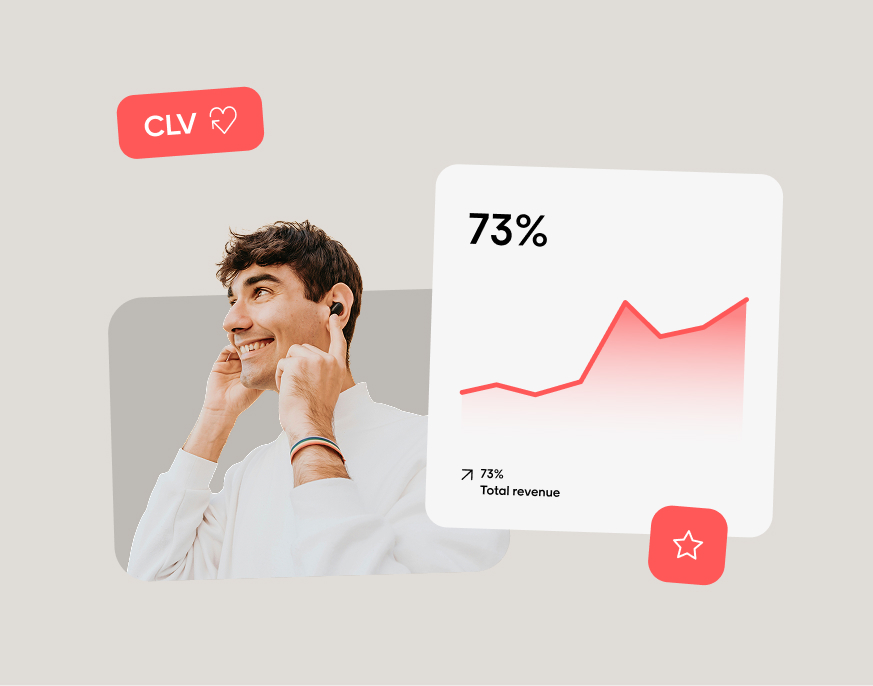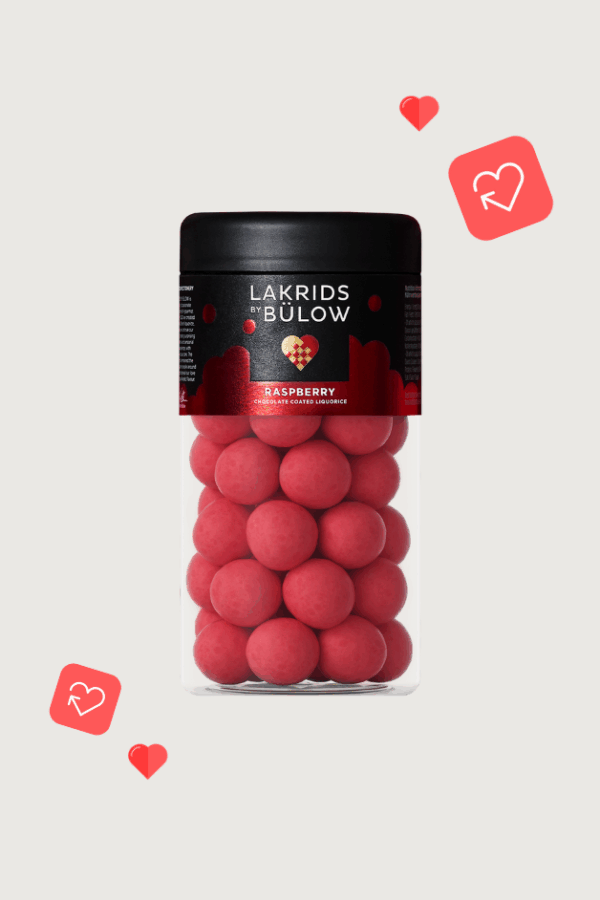TL;DR
- Customer lifetime value (CLV) helps you focus on your most valuable customers and predict future revenue.
- Retailers using CLV insights can segment smarter, improve retention, and increase average order value.
- In Voyado’s Retail Radar 2025, 73% of total retail revenue came from customers engaged in loyalty and retention communication.
- Combining CLV with customer data like purchase frequency and behavior creates stronger personalization.
- Use CLV-driven segmentation and automation to improve customer satisfaction, loyalty, and long-term profitability.
Winning a customer once is no longer enough. The future belongs to retailers who can build meaningful, long-term customer relationships.
Experience-led strategies can lift wallet share by up to 10%, according to McKinsey. And Customer Lifetime Value (CLV) helps you do exactly that.
When you understand customer lifetime value, you can measure how profitable each customer relationship really is, and act on it.
This shifts your focus from one-time transactions to repeat revenue and stronger customer loyalty.
What is customer lifetime value?
Customer lifetime value (CLV) estimates how much total revenue a single customer will generate over the entire relationship with your brand.
It’s one of the most important customer metrics in retail, helping you:
- Predict future revenue
- Identify your most valuable customers
- Improve customer retention and loyalty
- Reduce customer acquisition cost
- Develop targeted strategies for long-term growth
Unlike historic customer lifetime value, which looks at past data, predictive customer lifetime value uses behavioral signals and transaction history to estimate future profit potential.
Once you understand the numbers behind CLV, the next step is knowing how to use them in practice.
How to use CLV in retail marketing
Customer lifetime value is a decision-making tool. Here’s how you can put it to work.
1. Prioritize your most valuable customers
CLV helps you see beyond short-term sales. A long-time shopper with declining purchases may now have a lower lifetime value than a new customer showing strong engagement.
By understanding who your best customers are today, you can focus retention efforts where they matter most.
2. Segment customers by value
Start simple with a CLV-based segmentation model. You can build customer segments aligned with your loyalty program and CRM goals.
| CLV Range | Priority | Segment |
| €1000+ | High | Gold |
| €500–1000 | Medium | Silver |
| €0–500 | Low | Bronze |
These segments help you deliver personalized offers, rewards, and content to the right customer segment at the right time.
3. Automate customer journeys by value
Once you segment by CLV, you can automate customer journeys that nurture each group differently:
- Gold customers: Offer exclusive pre-sale access, early product launches, or VIP rewards.
- Silver customers: Send tailored product recommendations to boost average purchase value.
- Bronze customers: Create win-back or re-engagement campaigns to improve retention and lifetime value.
Each automated flow can help you increase purchase frequency and encourage customers to stay loyal longer.
But automation alone isn’t enough. To really understand what drives loyalty, you need to connect CLV with the behaviors behind it.
Combine CLV with behavioral data for deeper insight
CLV alone can’t tell the full story. The most effective retailers combine predictive CLV with customer engagement signals such as:
- Purchase frequency and recency
- Channel preference (online vs. in-store)
- Product category interest
- Customer feedback and satisfaction
- Lifecycle stage and churn risk
This combination of behavioral and transactional data helps you personalize customer experiences at every stage of the journey.
And when those insights feed into your loyalty program, you can turn satisfied customers into true brand advocates.
Use CLV to guide your loyalty strategy
According to Voyado’s Retail Radar 2025, 73% of all retail revenue comes from customers who receive loyalty and retention communications.
That means loyal customers aren’t just staying longer, they’re spending more and returning more often.
By integrating CLV with your loyalty program, you can:
- Identify which segments deliver the highest customer value
- Offer rewards that truly resonate with your best customers
- Improve customer retention rates and reduce churn
- Encourage customers to increase their average order value
Need more depth? Explore our suggestions in the post on customer retention strategies.
Let’s take it a step further and look at how CLV insights can support your entire customer lifecycle, not just retention.
Expanding CLV insights across the entire customer lifecycle
CLV shouldn’t live only in marketing dashboards. Share insights across your business to strengthen customer success, merchandising, and pricing strategies.
When every department knows which segments drive the most value, your teams can align around long-term growth instead of one-off conversions.
Practical examples include:
- Optimizing promotions based on customer segments instead of discounting broadly
- Using historic customer data to forecast purchasing behavior more accurately
- Calculating customer acquisition cost against predictive lifetime value to measure ROI
This cross-functional view transforms CLV from a marketing metric into a core business growth driver.
Your next opportunity lies in turning data-driven insight into stronger, longer-lasting customer relationships.
Over to you: Build lasting value from every customer relationship
Customer lifetime value is a way of thinking that puts relationships before transactions.
When you connect insights, automation, and loyalty, every interaction becomes more meaningful and profitable.
High-performing retailers use CLV to shape their entire strategy: from segmentation and rewards to pricing and inventory planning.
The result is consistent revenue, stronger brand loyalty, and a customer base that keeps growing in value.
How Voyado makes it easy to act on CLV
In Voyado, customer lifetime value (CLV) is projected by estimating how long each customer will stay active and how much revenue they’re likely to generate during that time.
The platform adjusts these projections for profit margins and capital costs, giving you a clear, realistic view of future profit potential.
When you connect this data to your loyalty and CRM strategy, Voyado helps you:
- Segment customers based on predicted value
- Automate personalized journeys and rewards
- Focus marketing spend where it drives the highest return
Your next steps
To start turning CLV insights into growth, make sure your team can:
- Calculate CLV consistently. Track both historic and predictive CLV to understand trends.
- Segment by potential, not just history. Focus spend on high-value and at-risk customers.
- Automate by segment. Tailor journeys that encourage repeat purchases and higher order values.
- Measure loyalty and retention. Track purchase frequency, churn rate, and engagement.
- Share insights company-wide. Align marketing, merchandising, and customer success around one shared view of value.
When you’re ready to make customer lifetime value the foundation of your growth strategy, book a demo and see how Voyado helps retailers turn data into loyalty that lasts.
FAQs
How do you calculate customer lifetime value?
You calculate CLV by multiplying the average purchase value, the average purchase frequency, and the average customer lifespan. Then, subtract customer acquisition costs to get your net customer lifetime value.
What’s a good customer lifetime value?
There’s no universal benchmark, but a healthy CLV should be at least 3 times your customer acquisition cost.
How can I increase customer lifetime value?
Focus on improving customer satisfaction, personalizing offers, and rewarding loyal customers. Small changes in retention can have a large impact on total revenue.
What’s the difference between historic and predictive CLV?
Historic CLV is based on past purchase data, while predictive CLV estimates future revenue using behavioral and transactional data.
How does Voyado help retailers improve CLV?
Voyado connects customer data, loyalty logic, and automation into a single platform to help retailers build stronger, longer-lasting customer relationships.









